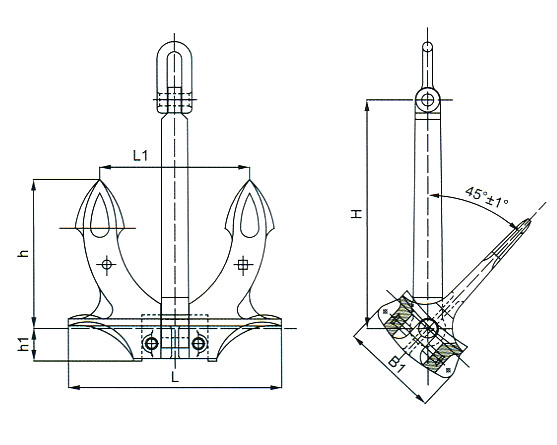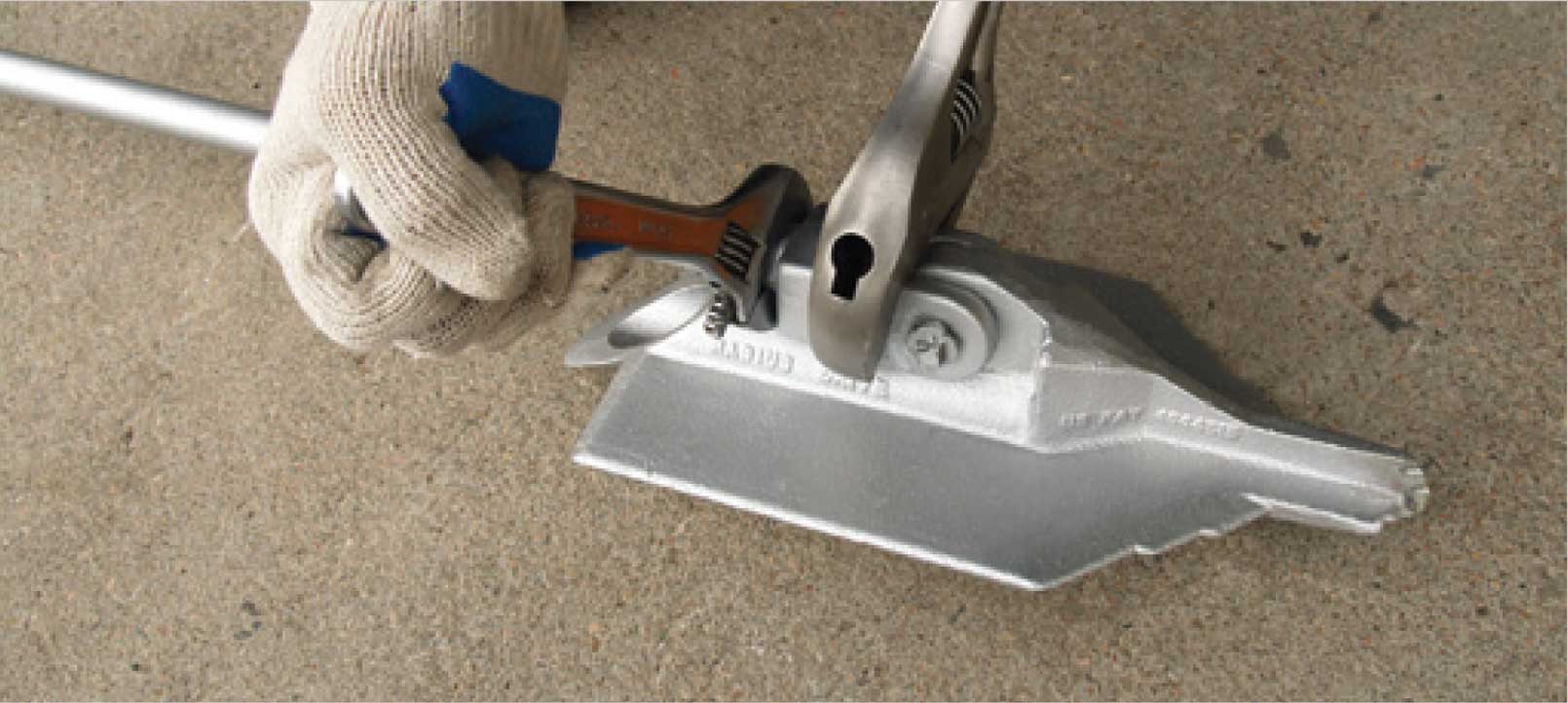Earth Anchor Technology: A Solid Option for Earthquake-Proofing
Earth Anchor Technology: A Solid Option for Earthquake-Proofing
Blog Article
Reliable Support Systems Designed for Maximum Strength
The design of efficient anchor systems is vital in guaranteeing maximum strength and integrity throughout numerous applications, especially in civil and aquatic design. As we check out the different kinds of support systems and the materials that underpin their effectiveness, it becomes noticeable that the future of securing innovation may hold also higher improvements.
Significance of Anchor Equipments
Support systems play a crucial role in numerous applications, from marine building and construction to offshore boring and even in the security of structures on land. In aquatic atmospheres, anchors are necessary for mooring vessels, stopping drift due to wind, currents, or waves.
In enhancement to aquatic applications, anchor systems are essential in civil design, particularly in the building and construction of keeping wall surfaces, bridges, and buildings in geologically tough areas. These systems aid distribute lots effectively, neutralizing forces such as soil stress and seismic task. The significance of anchor systems reaches the eco-friendly energy market, where they safeguard wind turbines and overseas systems, contributing to the stability and effectiveness of power generation.
Ultimately, the efficiency of a support system is fundamental to the safety, longevity, and capability of different structures, making their style and application a crucial component in engineering and building and construction practices across several markets.
Ingenious Products in Anchor Design

Modern innovations in materials science have actually dramatically transformed support style, improving performance and longevity. The unification of high-strength alloys and composite products has actually caused anchors that can endure extreme ecological problems while preserving architectural honesty. These cutting-edge products not only offer premium tensile stamina yet also lower weight, enhancing ease of installment and handling.
One notable development is making use of carbon fiber enhanced polymers (CFRP), which give superb corrosion resistance and high strength-to-weight proportions. This enables the design of supports that are both light-weight and extremely resilient, making them ideal for marine applications where direct exposure to saltwater can cause material degradation.
In addition, developments in coverings-- such as innovative epoxy and galvanization-- additional protect steel anchors from corrosion, prolonging their service life. These coatings can be tailored to meet details ecological obstacles, making certain that anchors execute dependably even in extreme conditions.
In addition, the integration of clever materials, which can adjust to changing tons and environmental variables, is paving the method for future support styles. These developments highlight a fad in the direction of better efficiency and reliability in securing options, inevitably boosting safety and security across different applications.
Kinds of Efficient Anchor Systems
Effective anchoring remedies are essential for ensuring security and safety in various applications, from construction to marine operations. Several sorts of reliable support systems stand out for their effectiveness and adaptability to different atmospheres.
One preferred type is the screw support, which makes use of a helical style to offer superior holding power in soil and soft ground. These anchors are particularly beneficial in short-lived frameworks and can be easily removed and recycled.
One more favored system is the driven pile anchor, often used you could try this out in hefty and aquatic building and construction jobs. These supports are driven deep right into the ground, supplying outstanding resistance to side forces, making them optimal for supporting large structures.
For marine applications, the mooring buoy support system is crucial. This system includes resilient gadgets linked to anchors on the seabed, permitting vessels to continue to be steady while minimizing drag from winds and currents.
Last but not least, the deadweight support system relies on heavy weights to offer security and is typically made use of in offshore installations. Each kind of anchor system is developed to fulfill certain requirements, guaranteeing the safety and stability of structures and vessels in various problems.
Safety And Security Criteria and Rules
Guaranteeing the safety and security and reliability of anchoring systems entails adherence to strict safety and security standards and guidelines. These criteria are established by numerous companies, consisting of the American Culture for Screening and Products (ASTM), the International Organization for Standardization (ISO), and regional building ordinance. Compliance with these laws is important to ensure that securing systems can withstand environmental anxieties and lots, lowering the risk of failure.
Checking and certification procedures are fundamental parts of safety requirements. Securing systems have to undergo extensive assessments, including tensile stamina tests, exhaustion examinations, and ecological impact examinations. These tests aid identify the systems' performance under real-world conditions, ensuring they satisfy or surpass the required safety limits.
Additionally, producers are required to provide thorough specifications and guidelines for installment and upkeep, which are integral to promoting safety and security requirements. Regular evaluation and maintenance procedures should additionally be established to identify potential weaknesses in time.
Future Fads in Anchor Innovation
The future of anchor modern technology is positioned for substantial advancements, driven by the enhancing demand for boosted safety and security and efficiency in building and design applications. Technologies are expected in products, layout, and setup strategies, which will certainly enhance the toughness and sturdiness of support systems.
One emerging trend is the combination of clever modern technology into anchor systems. Earth Anchor. By integrating sensing units, these systems can keep track of stress, lots, and environmental conditions in real-time, permitting proactive maintenance and raised reliability. Furthermore, developments in composite products might result in lighter, yet more powerful anchors that can hold up against extreme conditions, reducing the overall weight of frameworks


Additionally, modular support systems are obtaining grip, enabling less complicated setup and flexibility to numerous task demands. Earth Anchor. As the market accepts automation, robotic setup techniques can additionally simplify the anchoring process, improving effectiveness and accuracy
Verdict
In conclusion, effective support systems play a critical function in guaranteeing the security and security of aquatic and civil engineering tasks. The unification of innovative products and progressed designs substantially boosts holding power and resistance to numerous environmental challenges. Adherence to security standards and guidelines better underscores the significance of integrity in anchor systems. As modern technology continues to evolve, future fads are anticipated to concentrate on wise tracking options and lasting materials, leading the method for enhanced performance and longevity.
The layout of effective anchor systems is crucial in ensuring optimal strength and dependability throughout different applications, specifically in civil and marine engineering. As we discover the various types of support systems and from this source the materials that underpin their effectiveness, it comes to be apparent that the future of anchoring innovation may hold also better improvements.Guaranteeing the safety and security and integrity of securing systems entails adherence to rigid security requirements and policies.In conclusion, effective support systems play an important role in guaranteeing the security and safety of civil and aquatic design jobs. Adherence to safety standards and laws additionally underscores the significance of dependability in anchor systems.
Report this page